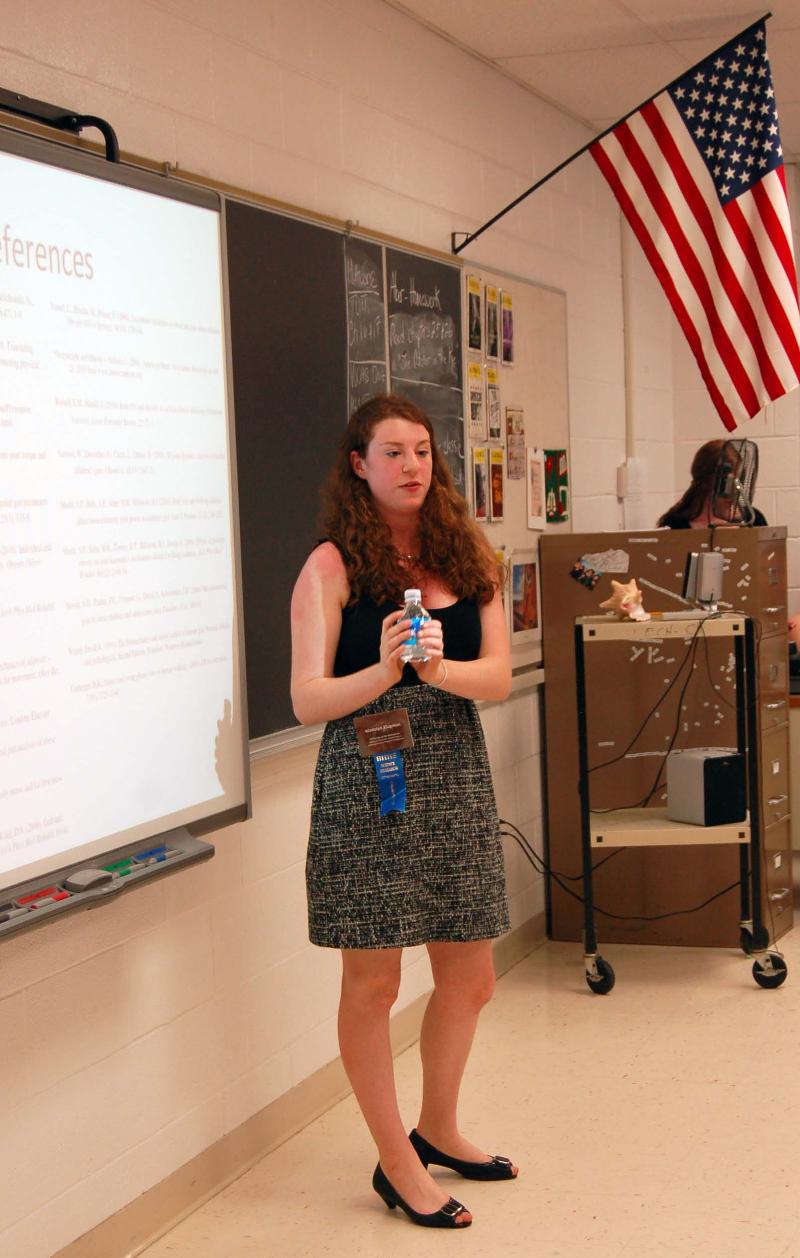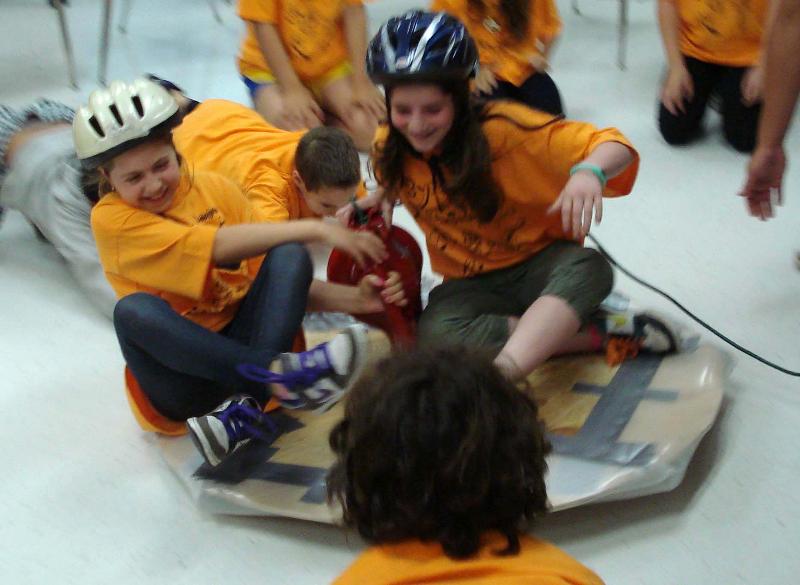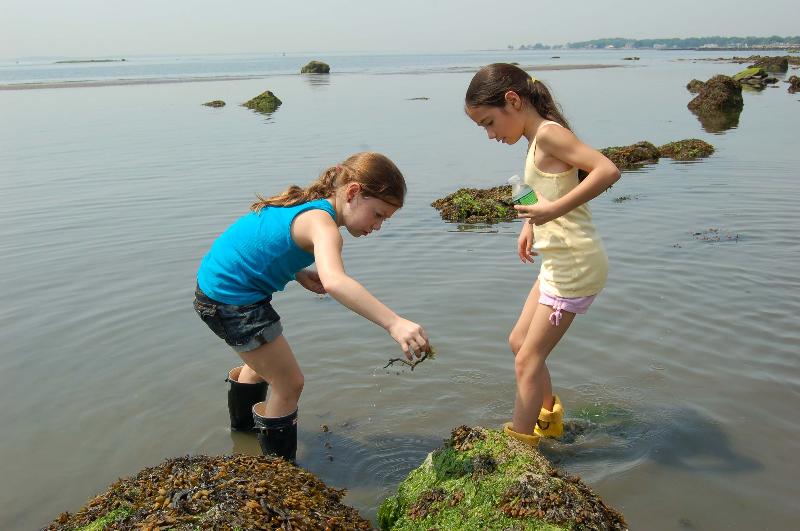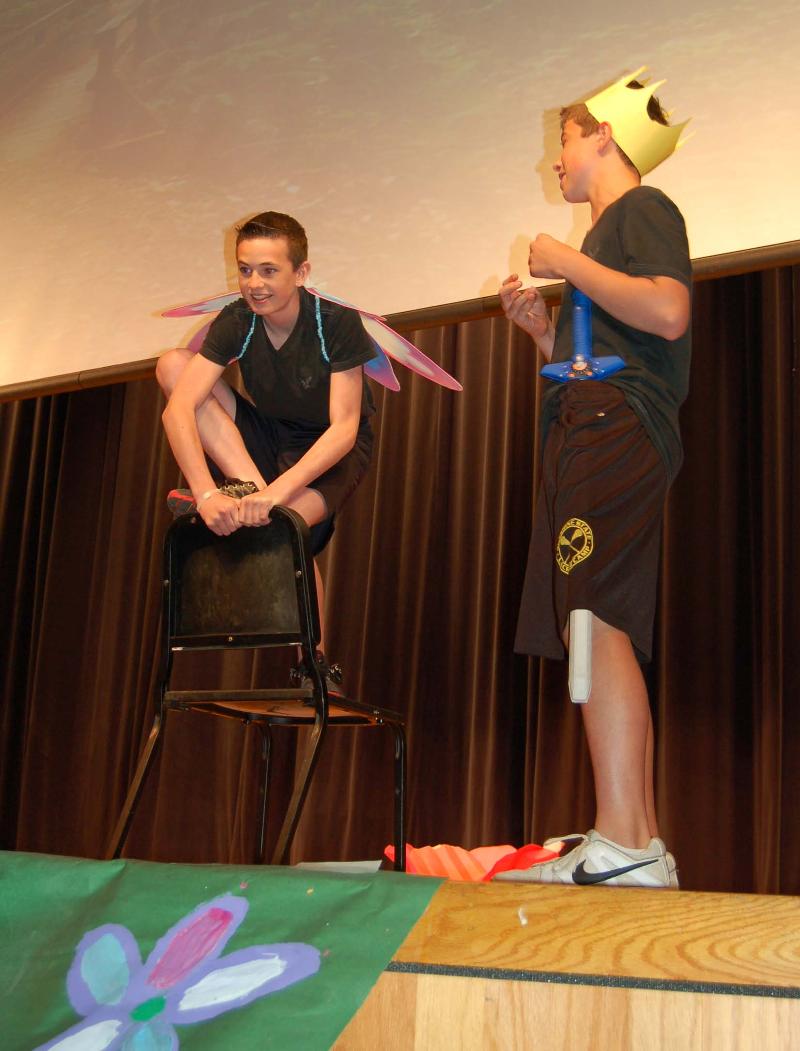|
' A great place to learn."
June 2011, Vol. 1: Issue 3 |
|
|
|
PASS IT ON!
Have you received this from a friend, neighbor or relative? Please join our mailing list to recieve future issues.

|
|
Science Research Symposium 2011 |
At the Eye of the Brainstorm. That's the title of the 22nd Annual Dr. Robert Pavlica Science Research Symposium, and it isn't an overstatement.
Byram Hills' science research students are at the eye of the brainstorm. They undertake independent, often ground-breaking, research, challenging each other to reach further and to think more deeply. Many Byram Hills science research students have gone on to become highly successful doctors, lawyers, scientists, researchers and engineers at some of the top corporations and institutions in the world; others are finding equal success working in private practice, running their own businesses, and teaching. Whatever their path, they all agree: participation in science research is a life-changing experience.
|

| | Maddie Klugman, an Intel semi-finalist, presents her research at the symposium. |
Meredith Arfa, keynote speaker at the June symposium, is a case in point. A graduate of the Class of 2001 and now practicing law in New York City, Ms. Arfa spoke about the many challenges she experienced in pursuing her science research on the use of sign language with chimps, a project that garnered her Intel finalist status. Although her research had no direct bearing on her subsequent college and career path, she said the skills learned in science research go far beyond the subject matter covered.
"The take-away is huge," she said. "You learn how to communicate with professionals, time management, the importance of persistence, how to handle rejection, how to write formally. This is knowledge that will always stay with you." Ms. Arfa told the students that one of the most important lessons she learned in science research was to "ask for what you want."
You just have to read the titles of some of the research projects to grasp how far students in the program push themselves. To the layperson, Connor Berlin's project, "Examining the Role of Constitutively Active Akt on Schwann Cell Myelination," has to have the most impenetrable title among this year's projects. But what's so special about this elective is that students don't have to have extraordinary scientific minds to succeed. "They have to have persistence, dedication and passion," said David Keith, science research teacher.
Science research is a three-year elective in which students choose an area of original scientific research to pursue, find a mentor - a professional in that field - to work with, and conduct their research independently. It was developed by longtime Byram Hills teacher Dr. Robert Pavlica, and has been adopted by more than 100 school districts in New York State. Students who complete the program, including two summers of independent research, can receive up to 12 credits from the State University of New York.
Speaking for her class at this year's symposium, senior Allegra Nevins said "I can honestly say that the past three years in science research have changed my life." Acknowledging the very challenging and stressful path that science research students choose, she said it was more than worth it. The bond she developed with her teachers and fellow students made the science research office, she said, "a home away from home."
More photos. |
|
Fifth Grade Science Night
| |
There's nothing like a "little" explosion to get the attention of 120 excited fifth graders. That's why Steve Borneman, high school chemistry teacher, exploded a hydrogen balloon to launch Fifth Grade Science Night last month.
 | | Carley Hershaft and Ashley Rawn ride a hovercraft powered by an electric leaf blower. |
The event, now in its sixth year, features high school students and teachers showcasing just how exciting science can be.
For more than two hours, fifth graders rotated through five of six activities with enticing names like Whiz BOOM! and Hovercraft Mania. GPS Treasure Hunt, the Sound of Magnetism, Fun with Physics, and Alchemy round out the options. Everyone participated in a seventh activity with Crittenden science teacher Jim Gulick, We All Scream for Ice Cream, in which they made - and enjoyed - ice cream.
Learning about the principles of air pressure, the fifth graders rode a hovercraft, ingeniously created by physics teachers David Keith and Eric Savino with the help of high school juniors, involving a piece of plywood, plastic sheeting, and duct tape, powered by a leaf blower. As part of their final project all AP Chemistry students create an experiment to demonstrate to the fifth graders, like oxygen and hydrogen explosions to simulate the fuel in space shuttles and making solutions glow in the dark with Luminol.
"The evening is designed to get students excited about science before they move up to middle school where they are going to experience science as a class on its own for the first time," said Mr. Borneman, who conceived Fifth Grade Science Night.
This year, BHHS physics teacher Kevin Guidotti also helped out, conducting a series of demonstrations on sound waves, using string and a slinky and a Ruben's Tube.
Chemistry teacher Evan Horowitz's Alchemy demonstration made a big impression on 11-year-old Stephen Morris. "We made gold pennies and silver pennies. I liked that," he said, also noting that "the high school kids made explosions."
Lucas Coats surprised himself by staying for the whole evening - his mom, Lauren, said he wasn't sure he wanted to. "We learned a lot of things - physics, how you make ice cream and how you make colors without markers or crayons," he said.
The high school students seem to enjoy the night as much as the fifth graders. "It's a great night," says senior Nicole Pollack who helped out for the third year in a row. "All the kids are so excited."
Said Lucas Coats: "The high school kids were really nice. We couldn't have done anything without them."
More photos.
|
|
|
|
Learning is a Day at the Beach for Second Graders |
A second grade visit to the Edith G. Read Nature Center in Rye involved more than learning what a naturalist does: it involved doing what a naturalist does.
 | | Coman Hill second graders Jaden Katz and Elaina Piecyk collecting seaweed samples during a field trip to enrich their study of intertidal zones. |
Second graders spent the morning at the beach, gently lifting rocks to peek at what was hiding beneath, peering into tidal pools and scooping up samples of creatures and seaweeds to take back to the center for further study.
"This is probably the best trip yet," said Jaden Katz as she negotiated the rocky beach earlier this month.
The visit was part of the second grade study of the intertidal zone, which involves the study of tides and what causes them, as well as of the eco-system of the habitat. The center's naturalists talked about all things tidal - the moon and its gravitational pull, food webs and how living and non-living things depend on each other.
 | | Lindsey Noel with a crab. |
Students collected crabs, mussels, snails and barnacles, and an assortment of seaweeds and shells.
"It was a wonderful trip because it was so hands-on," said second grade teacher Liz Courtney.
Daniella Monteforte, who found a shrimp, was clearly in her element with the hands-on activity. "I like finding all the animals crawling around everywhere," she said. Noam Molloy couldn't believe the "humungous crab" he caught, and Elaina Piecyk overcame some initial hesitancy about looking for creatures when she found a jellyfish (without any stingers).
Students discovered that seaweed is an algae and collected a variety of species including one graphically named Dead Man's Fingers. They also learned about Bladderwrack and Irish Moss, a substance they've already come into contact with; it's used as a binding agent in ice cream and toothpaste.
Teacher Nicole Cavaliere pointed out that the activity teaches students to respect the natural environment. Although each class has a salt-water tank in the classroom "to see everything in its natural environment is a whole different experience for them," she said.
All living creatures were returned to the sea after the class.
Click here for more photos.
| | |
|
Taking Ownership of Shakespeare |
Move over Boscobel, eighth graders at H.C. Crittenden Middle School have made Shakespeare's A Mid-Summer Night's Dream all their own.
 | |
Colin Dunn and Dillon Carlin as Puck and Oberon |
To help students better grasp The Bard, they were asked to choose a scene from the play and deconstruct it into today's language. It's a technique English teacher Jeanine Cappello, a classically trained actress, developed for herself years ago. "I couldn't understand what I was saying so I decided to put him into my own words and really find the connection underneath," she said.
She successfully used this "step out" technique teaching in the city and introduced it at Crittenden three years ago. The students performed both the original and their own version during the Crittenden Shakespeare Festival ealier this month, an all-day event that this year drew close to a full house.
"Shakespeare should be heard and seen and performed," said Mrs. Cappello. "We wanted to find a way for the students to really immerse themselves in it."
It worked. During the Shakespeare Festival students listened intently, sometimes offering prompts when performers forgot their lines. Interpretations were as varied as the actors, with several boys having fun hamming the role of Helena, and the modern-day versions skillfully capturing Shakespeare's sense of comedy.
Had he written today, there's no doubt Shakespeare would have made lavish use of social networking and other technologies when constructing his tangled love stories, and so the students' contemporary versions included references to Facebook and Twitter, cell phones, and TV shows. "What is this, 'The Real Housewives of Armonk'?" one student quipped to much applause.
"When the children speak his language they come alive," said Mrs. Cappello. "When they find the rhythm and meaning it's truly magical!"
English teacher Dana Ferraro, who, with Melinda Fuller works with Mrs. Cappello on the Festival, said the experience really resonates with the students. "The play dramatizes all the emotions of teen angst, love, friendship, betrayal, chaos, and comedy, and so the kids can relate." She said students have no trouble memorizing both the Shakespearean language and their own versions, "Because they become so connected to their characters."
The students agreed. Alicia Alvis said the experience helped her better understand Shakespeare. "It was really good. I love Shakespeare now."
Samantha Gold liked creating a modern spin on the scenes. "It was hard to understand the language but when we worked on putting it into our own time it was easier to understand what Shakespeare was saying."
Jack Bugbee donned a vivid red wig to play the part of Helena. "It was a lot of fun," he said of the whole experience. "It really made me think about Shakespeare and the way he wrote." Like many students, Jack participated in more than one act.
Others chose to be a stage manager, set designer, create playbills or design invitations. True to Shakespeare, each class developed a prologue set to music, although the Crittenden version featured a series of pictures and lines from the play scrolled on a large screen above the stage. As the final flourish, at the end of each set of skits, "Shakesbook" credits rolled on the large screen, complete with each participant's photo and profile.
The unit included an overall study of Shakespeare and his influence on theater as well as a performance of A Mid-Summer Night's Dream by the New Jersey Shakespeare Festival, funded by the school's PTSA.
"The best part of that was to see how critical the students were of the professional performance. It really showed how well they came to know the characters" said Mrs. Cappello.
More photos. |
|
|
|
|
|
Our MissionIn an environment of mutual respect, the Byram Hills School District and its community will provide students with the means, the knowledge, and the opportunity to excel in order to become productive and responsible citizens of the 21st century.www.byramhills.org
Byram Hills School District Board of Education: Mr. Brett Summers, President; Dr. Ann Tedesco, Vice President;
Dr. Leslie Blum (Cziner); Dr. Alban Burke; Ms. Robin Glat; Ms. Joyce Meiklejohn; Mr. Ira Schulman
Dr. Jacquelyn Taylor, Superintendent
|
|
|
|
|